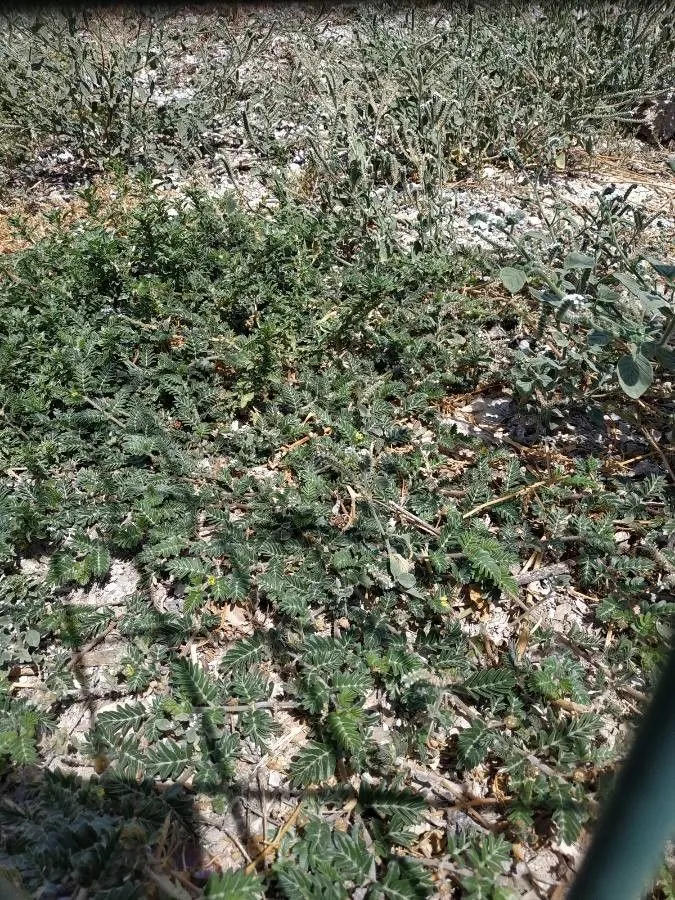
Author: S.Watson
Bibliography: Proc. Amer. Acad. Arts 12: 273 (1877)
Year: 1877
Status: accepted
Rank: species
Genus: Amaranthus
Vegetable: Unknown
Observations: C. & EC. U.S.A.
Mat amaranth, scientifically known as Amaranthus blitoides, is a plant species belonging to the Amaranthaceae family. This resilient and adaptable species was first described in detail by the botanist S. Watson in 1877 in the Proceedings of the American Academy of Arts.
Native to the central and eastern regions of the United States, Mat amaranth thrives in a variety of environments, demonstrating a particular affinity for disturbed grounds such as roadsides, agricultural fields, and other open, sunny areas. Its adaptability allows it to be a common presence in both urban and rural landscapes.
The plant is characterized by its prostrate growth habit, often forming dense mats that can cover large areas. Its stems, which can spread out in all directions from a central root system, bear small, elliptic to ovate leaves with a smooth texture. These leaves are typically a vibrant green, adding a lush appearance to its overall mat-like form.
Mat amaranth blooms inconspicuously, with its flowers forming in small, compact clusters at the leaf axils. Despite their unassuming appearance, these flowers play a crucial role in the plant’s reproductive cycle, facilitating seed production and dispersal. Each flower cluster houses tiny, greenish blooms that are wind-pollinated, ensuring the survival and spread of the species across suitable habitats.
Given its robust nature, Mat amaranth is often considered a weed in agricultural settings. Its ability to thrive in disturbed soils and compete with crops for nutrients and water makes it a challenge for farmers. However, its presence in ecosystems can also contribute to soil stabilization, preventing erosion in areas where other vegetation might struggle to establish.
Overall, Amaranthus blitoides exemplifies the resilience and adaptability of the Amaranthaceae family. Whether appreciated for its role in naturalized landscapes or managed as a weed in cultivation zones, Mat amaranth is a notable and persistent component of the flora in the central and eastern United States.
Fra: amarante fausse blette, amarante à feuilles marginées, amarante fausse-blite, amarante fausse-blette
Ita: amaranto blitoide
Spa: bledo, amarant, amaranto, blet, blet punxent, breo, hebreo, marxant, taramago
Lit: guls
Eng: mat amaranth, matweed, matweed amaranth, prostate pigweed, prostrate amaranth, prostrate pigweed, procumbent pigweed, mat pigweed
Nld: nerfamarant
Dan: skebladet amarant
Pol: szarłat komosowaty
Deu: westamerikanischer amarant, westamerikanischer fuchsschwanz
Heb: yarbuz saru’a, ירבוז שרוע
Lav: balandu amarants, balandu kaķaste
Por: bredo, erva-aranha
Ell: glintos, glintros, plagiasto vlito
Hun: labodás disznóparéj
Est: lamav rebashein
Ces: laskavec žmindovitý
Swe: skedamarant
Cym: blodyn amor gorweddol
En: Mat amaranth, Prostrate Pigweed, Matweed, Matweed amaranth, Prostate pigweed, Prostrate amaranth, Procumbent pigweed, Mat pigweed
Ca: Amarant blitoide
Cs: Laskavec žmindovitý
Da: Skebladet amarant
Nl: Nerfamarant
Et: Lamav rebashein
Fr: Amarante fausse Blette, Amarante à feuilles marginées, Amarante fausse-blite, Amarante fausse-blette, Fausse Amarante
De: Westamerikanischer Amarant, Westamerikanischer Fuchsschwanz, Niederliegender Amarant
El: Glintos, Glintros, Plagiasto vlito
He: Yarbuz saru’a, ירבוז שרוע
Hu: Labodás disznóparéj
It: Amaranto blitoide
Lv: Balandu amarants, Balandu kaķaste
Lt: Guls
Pl: Szarłat komosowaty
Pt: Bredo, Erva-aranha
Es: Bledo, Amarant, Amaranto, Blet, Blet punxent, Breo, Hebreo, Marxant, Taramago
Sv: Skedamarant
Cy: Blodyn Amor Gorweddol
Taken Aug 3, 2014 by Tela Botanica − Marie PORTAS (cc-by-sa)
Taken Jun 10, 2019 by Yves JEAN (cc-by-sa)
Taken Nov 3, 2022 by ernie alconchel guido (cc-by-sa)
Taken Jul 23, 2020 by González Rafael (cc-by-sa)
Taken Sep 7, 2021 by Corsan Josema (cc-by-sa)
Taken Nov 10, 2013 by Tela Botanica − Marie PORTAS (cc-by-sa)
Taken Jul 18, 2012 by Tela Botanica − Bertrand BUI (cc-by-sa)
Taken Sep 8, 2019 by Tela Botanica − Sylvain Piry (cc-by-sa)
Taken Sep 8, 2019 by Tela Botanica − Sylvain Piry (cc-by-sa)
Taken Jul 2, 2017 by huy HO (cc-by-sa)
Taken Aug 18, 2020 by Javier (cc-by-sa)
Taken Aug 26, 2021 by Inna2208 Inna2208 (cc-by-sa)
Taken Jun 2, 2022 by Monteiro Henrique (cc-by-sa)
Taken Aug 5, 2021 by Frédérique Berato (cc-by-sa)
Taken Jun 14, 2022 by Acosta García Isabel (cc-by-sa)
Taken May 10, 2019 by Faïza AIOUANI (cc-by-sa)
Taken Oct 27, 2016 by Tela Botanica − Dominique BLANC (cc-by-sa)
Taken Apr 22, 2022 by blau paty (cc-by-sa)
Taken Jun 2, 2022 by Monteiro Henrique (cc-by-sa)
Taken Jul 2, 2017 by huy HO (cc-by-sa)
Taken Jun 17, 2021 by Λιζα Λιζα (cc-by-sa)
Taken Apr 30, 2019 by Sean Goodwin (cc-by-sa)
Taken Aug 5, 2021 by Frédérique Berato (cc-by-sa)
Taken Oct 21, 2021 by margarida vila (cc-by-sa)
Taken Nov 10, 2013 by Tela Botanica − Marie PORTAS (cc-by-sa)
© copyright of the Board of Trustees of the Royal Botanic Gardens, Kew.
Taken Sep 8, 2019 by Tela Botanica − Sylvain Piry (cc-by-sa)
Taken Jun 3, 2019 by ahmad ahmad (cc-by-sa)
Taken Feb 6, 2018 by Llandrich anna (cc-by-sa)
Taken Aug 5, 2021 by Frédérique Berato (cc-by-sa)
Taken Feb 6, 2018 by Llandrich anna (cc-by-sa)
Family: Myrtaceae Author: (F.Muell.) K.D.Hill & L.A.S.Johnson Bibliography: Telopea 6: 402 (1995) Year: 1995 Status:…
Family: Rubiaceae Author: Pierre ex A.Froehner Bibliography: Notizbl. Bot. Gart. Berlin-Dahlem 1: 237 (1897) Year:…
Family: Sapindaceae Author: Koidz. Bibliography: J. Coll. Sci. Imp. Univ. Tokyo 32(1): 38 (1911) Year:…
Family: Asteraceae Author: A.Gray Bibliography: Pacif. Railr. Rep.: 107 (1857) Year: 1857 Status: accepted Rank:…
Family: Fabaceae Author: Medik. Bibliography: Vorles. Churpfälz. Phys.-Ökon. Ges. 2: 398 (1787) Year: 1787 Status:…
Family: Aspleniaceae Author: (Cav.) Alston Bibliography: Bull. Misc. Inform. Kew 1932: 309 (1932) Year: 1932…